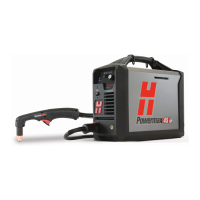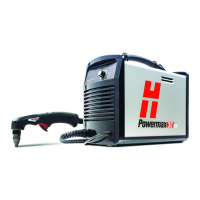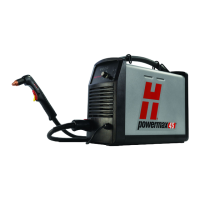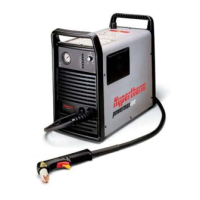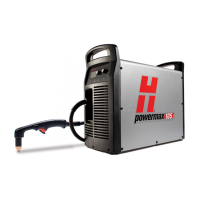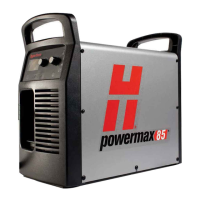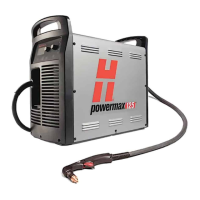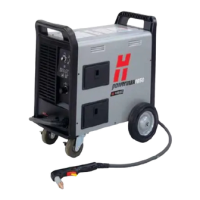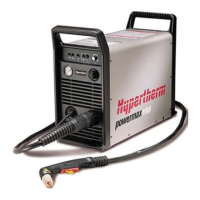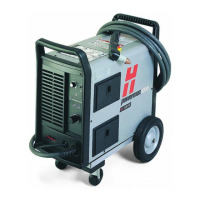OPERATION
powermax
45
Operator Manual 4-17
High-speed dross forms when the cutting speed is too fast and the arc lags behind. It forms as a
thin, linear bead of solid metal attached very close to the cut. It is welded to the bottom of the cut
and is difficult to remove. To reduce high-speed dross:
• Decrease the cutting speed.
• Decrease the torch-to-work distance.
Notes: Dross is more likely to form on warm or hot metal than on cool metal. For
example, the first cut in a series of cuts usually produces the least dross. As
the workpiece heats up, more dross may form on subsequent cuts.
Dross is more likely to form on mild steel than on stainless steel or aluminum.
Worn or damaged consumables may produce intermittent dross.
Straightness of the cut surface
A typical plasma cut surface is slightly concave.
The cut surface may become more concave, or convex. Correct torch height is required
to keep the cut surface acceptably close to straight. Worn consumables also affect the
straightness of the cut.
A strongly concave cut surface occurs when the torch-to-work distance is too low.
Increase the torch-to-work distance to straighten the cut surface.
A convex cut surface occurs when the torch-to-work distance is too great or the cutting
current is too high. First, try lowering the torch, then reduce the cutting current.
To pierce a workpiece using the machine torch
As with the hand torch, you can start a cut with the machine torch at the edge of the workpiece or
by piercing the workpiece. Piercing will result in a shorter consumable life than with edge starts.
The cut charts include a column for the recommended torch height when starting a pierce. For the
Powermax45, the pierce height is generally 2.5 times the cutting height. Refer to the cut charts for
specifics.
The pierce delay must be sufficiently long that the arc can pierce the material before the torch
moves, but not so long that the arc “wanders” while trying to find the edge of a large hole.
When piercing maximum thicknesses, the ring of dross that forms during the pierce may become
high enough to contact the torch when the torch begins to move after the pierce is complete.
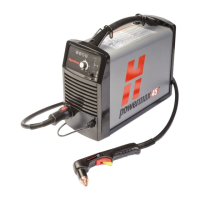
